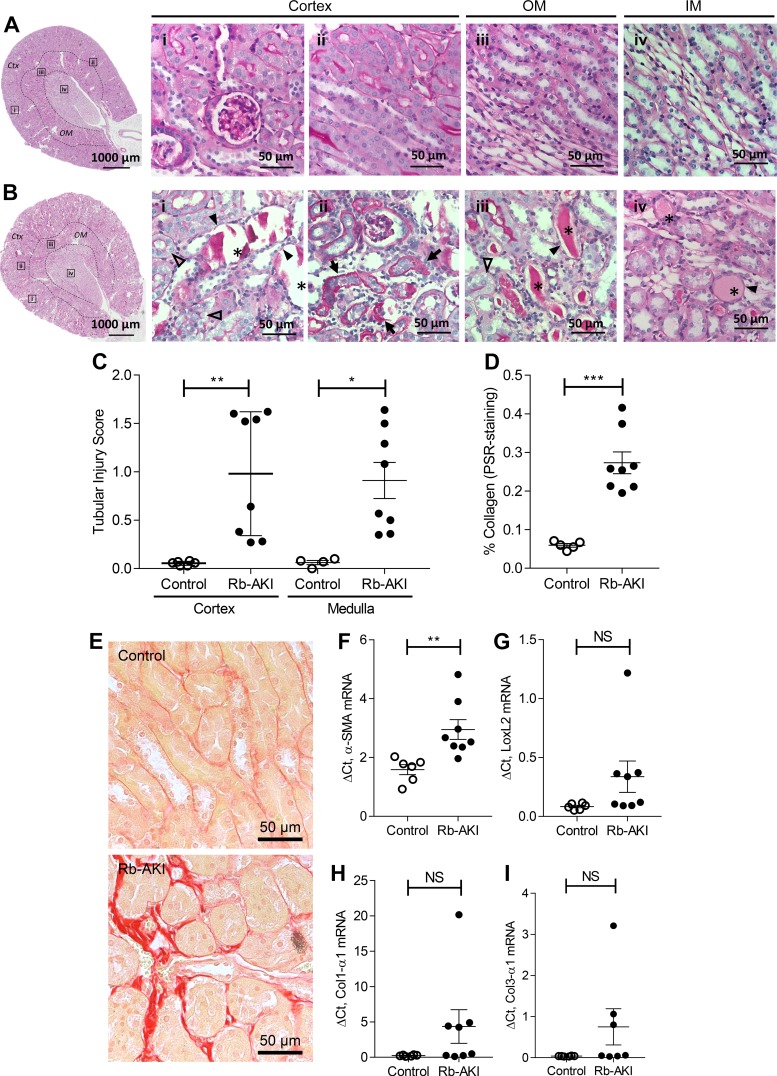Fig. 4.
Tubular injury and fibrosis after rhabdomyolysis-induced acute kidney injury (Rb-AKI). A and B: representative images of a control kidney (A) and a Rb-AKI kidney (B) at day 36. The highlighted boxes (i–iv) in the low-power images correspond to the magnified images to the right. In injured kidneys (B), cortical tubules were dilated with friable casts (i, *), while the outer (OM; iii) and inner medulla (IM; iv) had solid casts (*). There was also peritubular fibrosis with interstitial proliferation in the cortex (Ctx; ii, arrows) and OM (not shown). Tubules also showed deepithelialization (closed arrowheads) and epithelial vacuoles (open arrowheads). C: tubular injury scores in the Ctx and OM from periodic acid-Schiff-stained kidney sections at day 36. D: quantification of renal fibrosis (picrosirius red staining) in the OM at day 36. E: representative images of the OM of picrosirius red-stained kidney sections. F−I: mRNA expression of the following fibrosis markers: α-smooth muscle actin (α-SMA; F), lysyl oxidase-like 2 (LoxL2; G), collagen type I-α1 (Col1-α1; H), and collagen type III-α1 (Col3-α1; I) relative to GAPDH on day 36. Data points in C, D, and F–I represent individual animals, with means ± SE of the groups indicated. A two-sided t-test was used to compare Rb-AKI with control mice in C, D, and F–I. NS, not significant (P > 0.05). **P ≤ 0.01; ***P ≤ 0.001.

